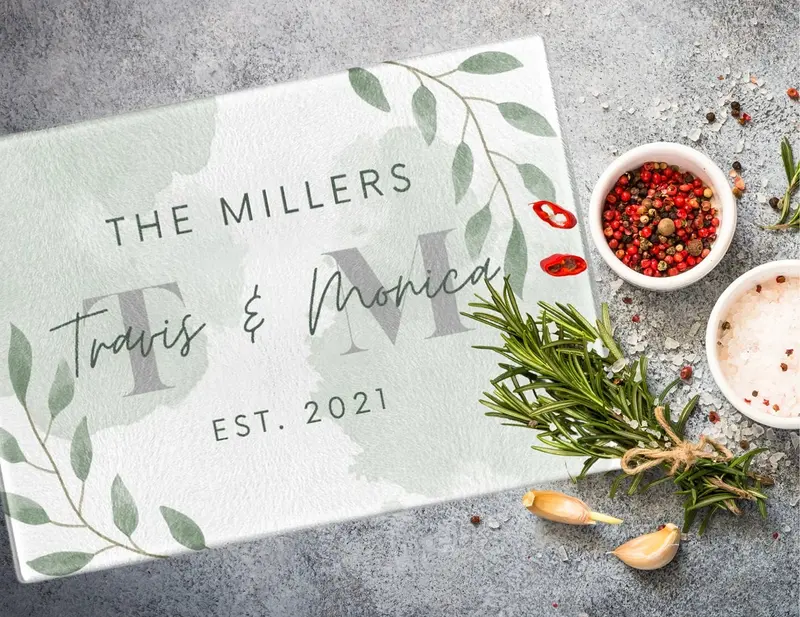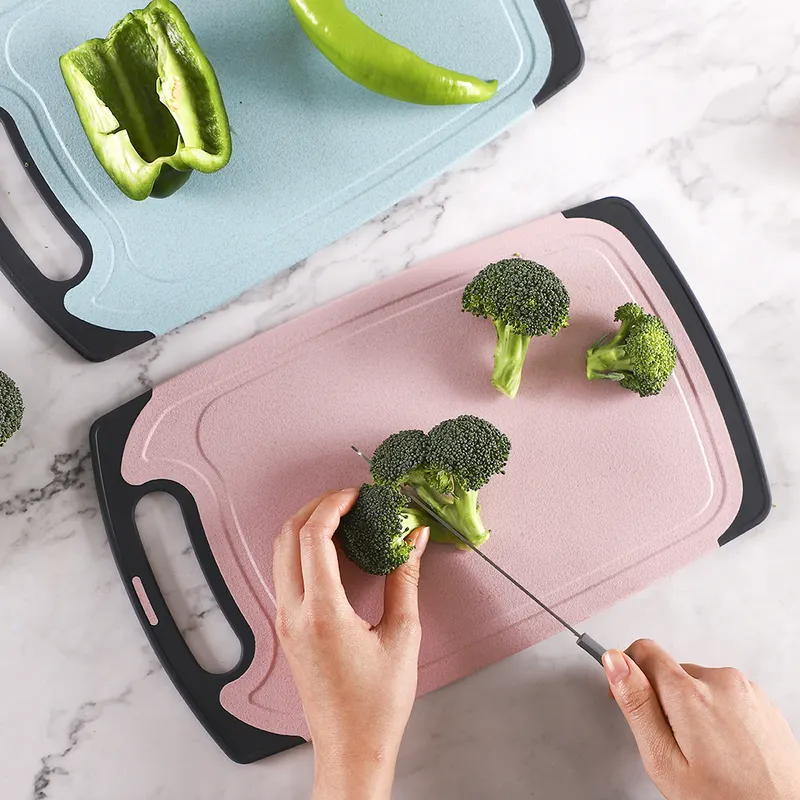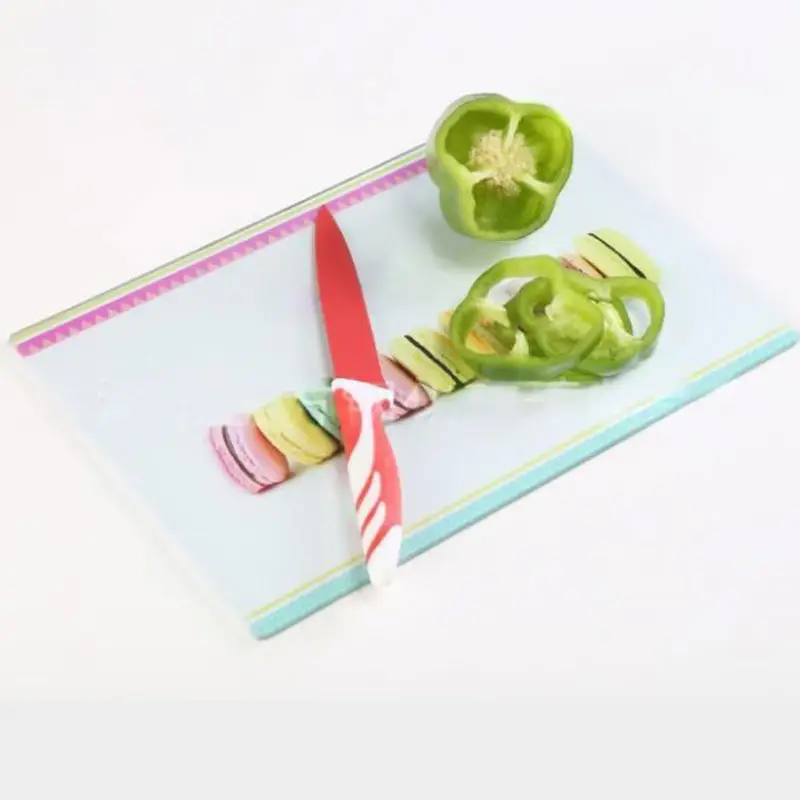Choosing the right cutting board involves considering various factors, including material, maintenance, durability, and personal preferences. Here’s a comparison between glass cutting boards and other common materials to help you make an informed decision:
Glass Cutting Boards:
Pros:
- Hygienic Surface: Glass is non-porous, making it resistant to bacteria, odors, and stains.
- Sleek Aesthetics: Glass cutting boards have a modern and stylish appearance that can enhance kitchen aesthetics.
- Easy to Clean: Glass cutting boards are easy to clean and can often be washed in the dishwasher.
- Heat-Resistant: They can withstand hot pots and pans without damage.
- Versatility: Suitable for cutting various types of food and can be used as trivets or serving platters.
Cons:
- Prone to Chipping or Breaking: Glass cutting boards can be more prone to chipping or breaking compared to other materials.
- Hard on Knife Blades: Glass is a hard surface that can dull knife blades more quickly.
- Lack of Cushioning: Glass provides minimal cushioning for knife blades.
- Potential Noise: Cutting on a glass surface can produce more noise compared to softer materials.
Wood Cutting Boards:
Pros:
- Gentle on Knife Blades: Wood provides a forgiving surface that is gentle on knife blades.
- Natural Aesthetics: Wooden cutting boards have a warm and natural appearance that many find appealing.
- Antibacterial Properties: Some types of wood, such as maple, have natural antibacterial properties.
- Durable: Well-maintained wood cutting boards can be durable and long-lasting.
Cons:
- Maintenance Required: Wood cutting boards require regular oiling and maintenance to prevent drying and cracking.
- Potential for Absorption: Wood can absorb liquids and odors, requiring thorough cleaning to prevent contamination.
- Not Dishwasher Safe: Most wooden cutting boards are not dishwasher safe and should be hand-washed.
Plastic Cutting Boards:
Pros:
- Affordable: Plastic cutting boards are often more affordable than glass or wood.
- Dishwasher Safe: Many plastic cutting boards are dishwasher safe, making cleaning convenient.
- Variety of Colors: Plastic cutting boards are available in a wide range of colors, and some come in color-coded sets for different food types.
- Lightweight: Plastic cutting boards are lightweight and easy to handle.
Cons:
- Wear and Tear: Plastic cutting boards can show signs of wear and tear more quickly than some other materials.
- Potential for Grooves: Deep knife grooves can develop over time, providing a breeding ground for bacteria.
- Not Heat-Resistant: Plastic cutting boards may warp or melt if exposed to high heat.
- Less Aesthetic Appeal: Some users may find plastic cutting boards less visually appealing compared to glass or wood.
Conclusion:
The choice between glass, wood, or plastic cutting boards depends on your priorities and preferences. Glass cutting boards offer a hygienic and modern look but require careful handling to avoid breakage. Wood cutting boards are gentle on knives but need regular maintenance. Plastic cutting boards are affordable and come in various colors but may show wear more quickly. Consider your cooking habits, maintenance preferences, and aesthetic preferences when making your decision.



